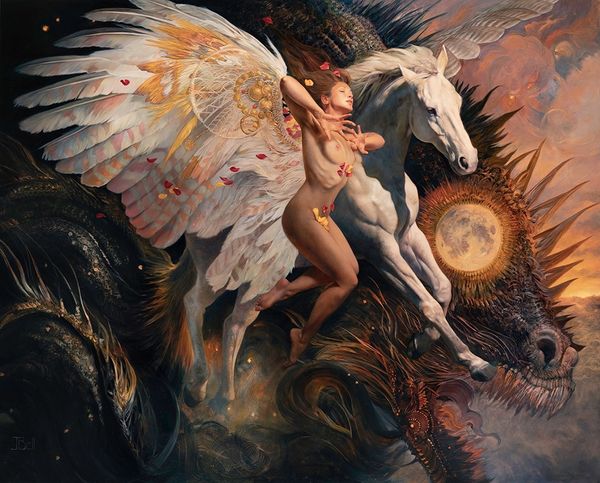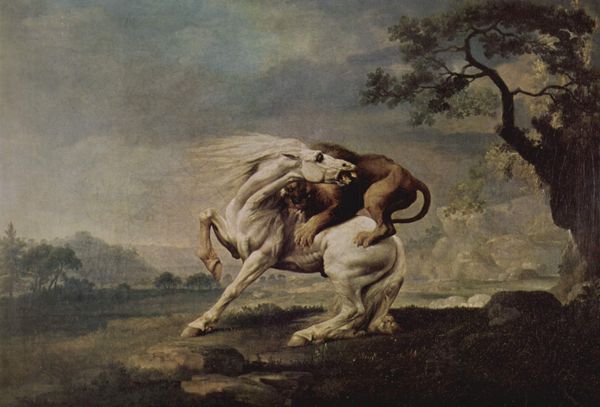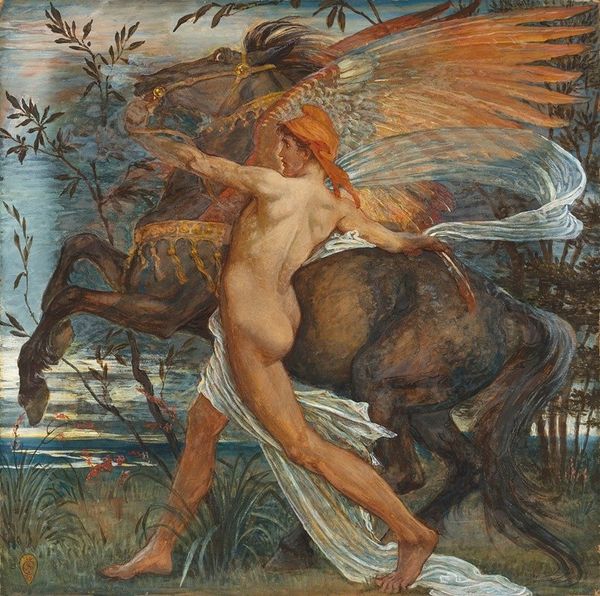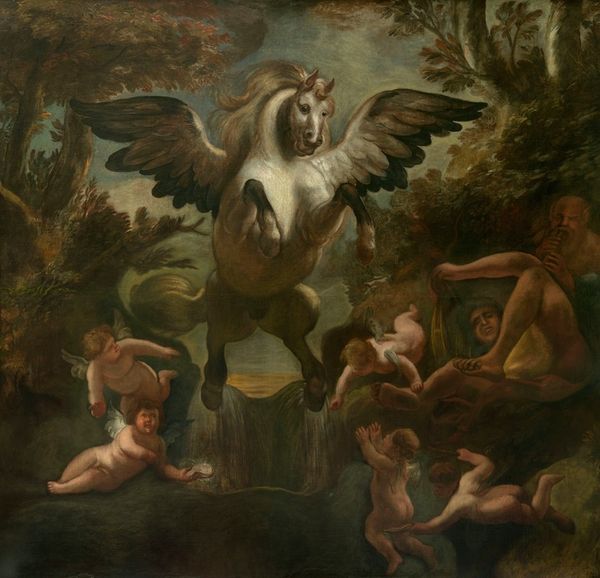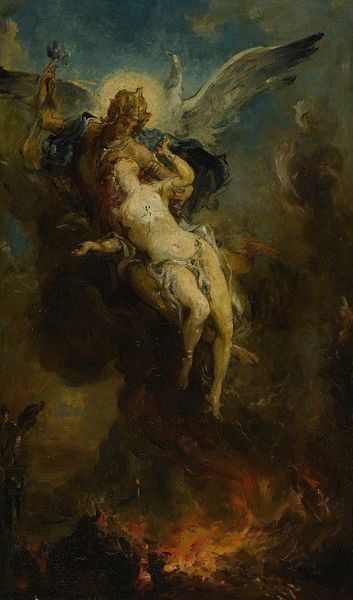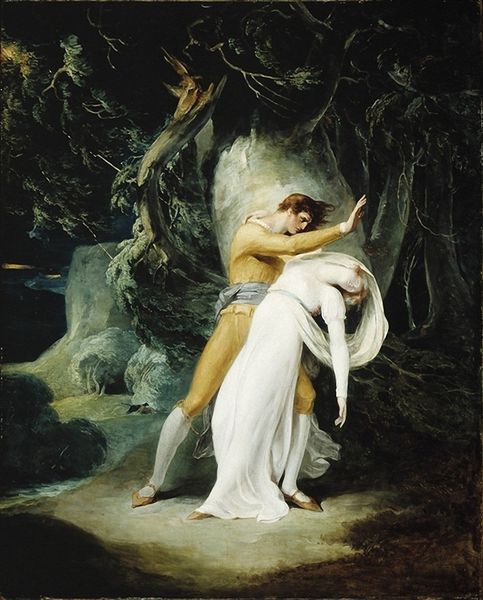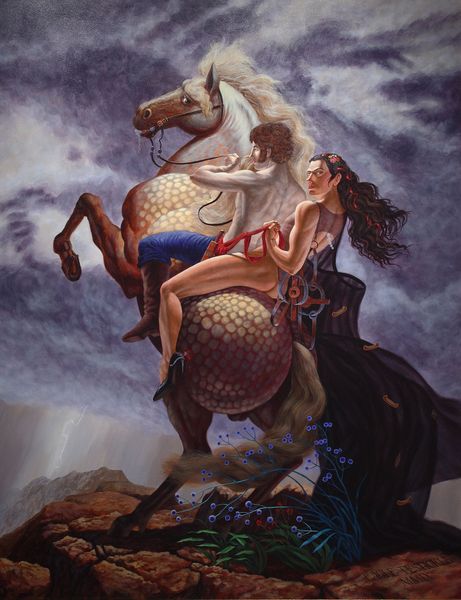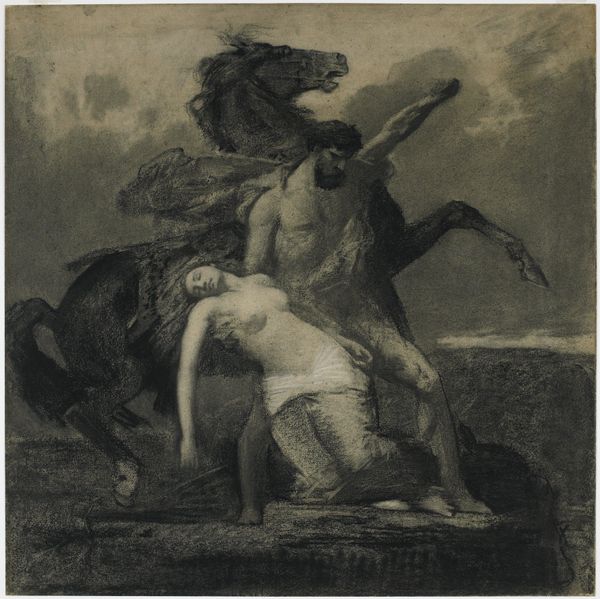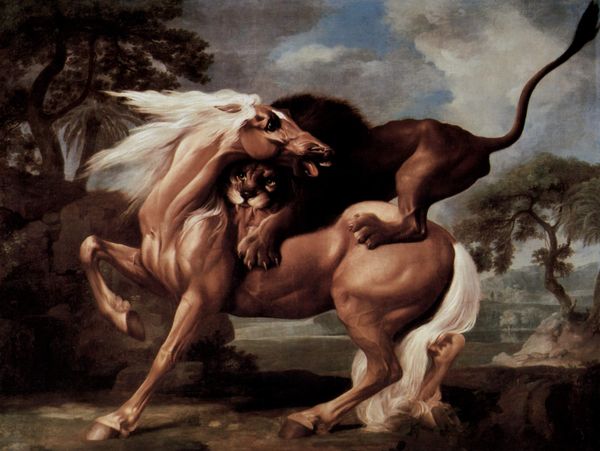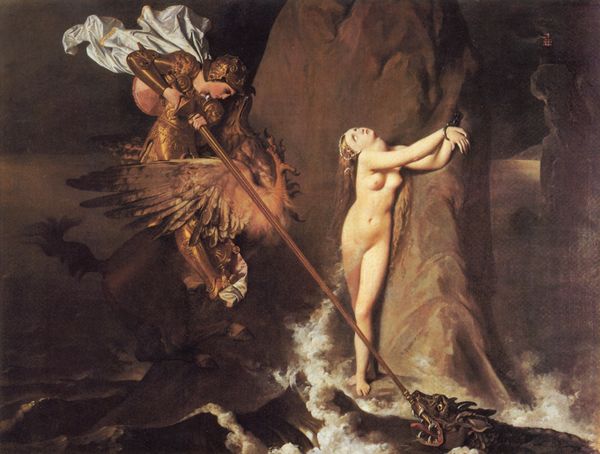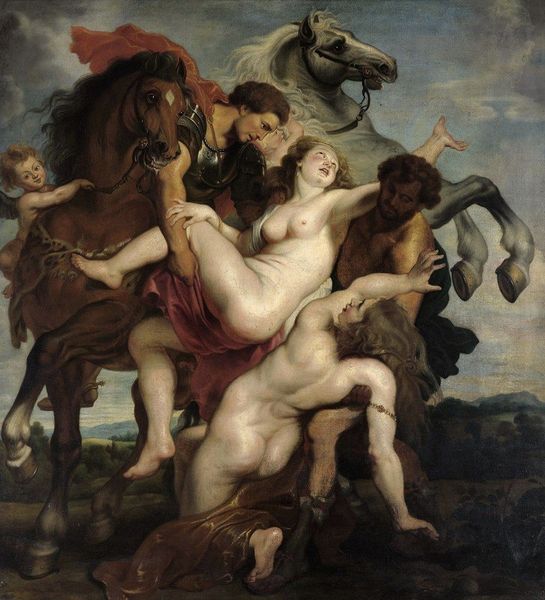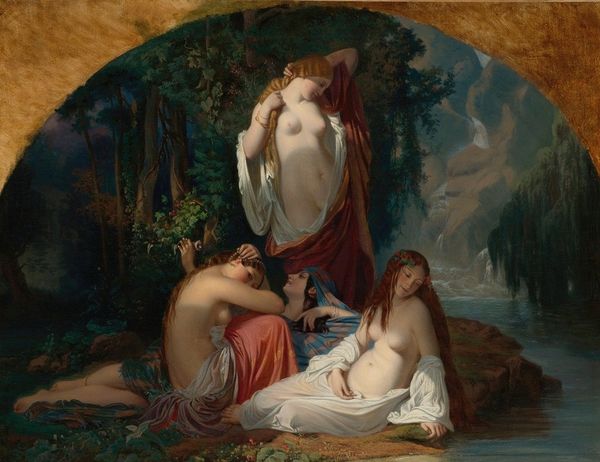
painting, oil-paint
#
allegory
#
narrative-art
#
fantasy art
#
painting
#
oil-paint
#
landscape
#
fantasy-art
#
figuration
#
romanticism
#
mythology
#
history-painting
Copyright: Public domain
Editor: Here we have Horace Vernet’s 1826 painting "Mazeppa and the Wolves," created with oil paint. I'm immediately struck by the dramatic lighting and the movement implied by the horse and wolves. What elements of its composition stand out to you? Curator: The dynamism certainly is arresting. Note the stark contrast between the smooth, almost porcelain-like rendering of the human figure and the horse, versus the more agitated brushstrokes used to depict the surrounding wilderness and the wolves. Consider also the diagonal thrust established by the horse's body – it effectively bisects the pictorial space, heightening the sense of urgency and precariousness. Do you perceive a correspondence between the texture and the narrative content? Editor: I think so, the smooth textures highlight the vulnerability of Mazeppa and the horse. It does seem to amplify that feeling of vulnerability. Is this typical of Romantic painting? Curator: Romanticism, as an art movement, embraced dramatic contrasts. Observe how Vernet uses light and shadow to sculpt forms and evoke emotion, aligning perfectly with Romantic ideals. The positioning of Mazeppa is interesting as well, vulnerable, in between the wild animals. Is this, in your estimation, essential to a history painting? Editor: Perhaps the placement amplifies the vulnerability, makes him a pawn of external forces? It also puts a focus on the diagonal composition. But how do you interpret the space around the horse and rider, particularly its depth? Curator: Space is articulated not just through linear perspective but through tonal variation. The subtle shifts in value – from light to dark – suggest recession into the distance, while simultaneously contributing to the overall mood of impending threat. Vernet masterfully uses atmospheric perspective, causing details to fade and edges to soften as they recede into the distance. Now, what semiotic function do you think that performs? Editor: So the composition isn't just aesthetic, it builds meaning. The diminishing details and fading colours evoke the overwhelming, hostile environment Mazeppa is navigating. I am starting to notice the technical detail, it is helping tell a bigger story. Curator: Precisely. This careful consideration of space is integral to the painting's narrative impact, demonstrating the inseparable link between form and content. This Romantic landscape goes well beyond being merely aesthetically pleasing, as Vernet uses materiality and space to speak directly to the meaning of his depicted narrative.
Comments
No comments
Be the first to comment and join the conversation on the ultimate creative platform.
